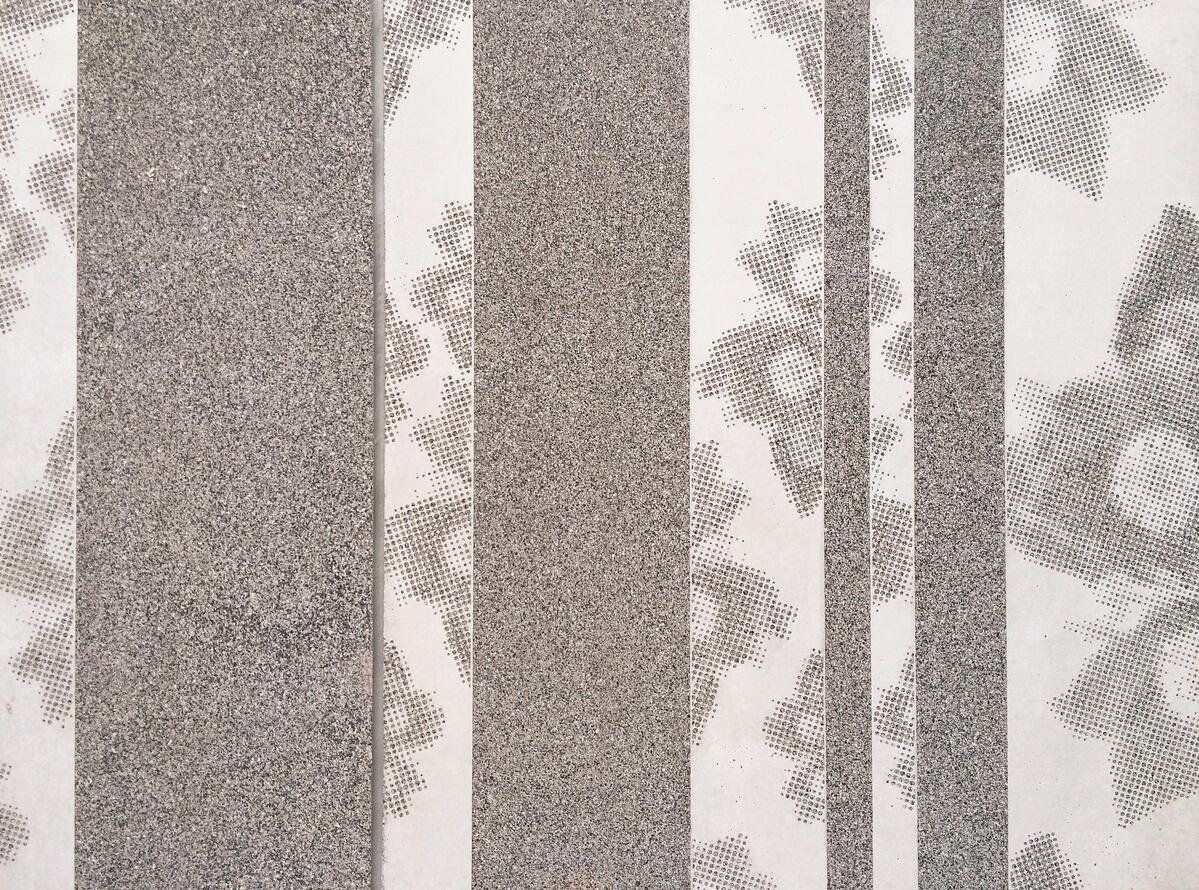A surface that surprises the viewer and invites to touch
BY LINDA HIRVONEN
19.02.2019
Have you ever seen people touching the façade of a building with excitement? You haven’t? Well I have to say I have, many times, as strange as it sounds. But those façades weren’t wood, laid brick, plaster or a painted surface - marvelous though they may be. But these materials also tend to be common, so there is rarely excitement as to the material used.
No, the building façades that attracted people to touch and examine them closely have all been concrete. I’m not kidding. When you get a group of people to view a graphic concrete structure, the first thing everyone does is move closer. How close? Close enough to touch the façade surface and experience the concrete texture.

Next comes the surprise revealed. You can see it in their face: As hands go over concrete, they experience the texture, so different from what’s expected. The surface feels somehow human and soft, even though the material itself is hard and cold. (It is concrete after all.)
Here’s why precast concrete feels different from a concrete block or a patio: The pattern results from the contrast between the fair face (cement) and the exposed aggregate (stone) surface. The contrast between a velvety smooth cement surface and the rough stone surface triggers the same perceptions as ”sweet & sour” or ”savory & sweet”; in other words, a surprising sensation.

Touch the façade surface ... the visual effect fools the eye
It gets even more exciting when you add special elements to the structure – maybe a 3D effect that reveals itself only when you get close enough. It is surprising how the human eye is able to fool our brains. A graphic concrete 3D pattern may appear from afar like crumpled paper emerging from a facade, but when you get close, you realize that the surface is completely flat.
You must stand quite close to the façade to see how the illusion is created. The optical illusion and the element of surprise invites you to explore the surface even more closely.How is the effect made? What is the material? How does it feel? This curiosity and wonder at the texture is something that not many other building materials are awaken.


So how is the concrete texture and 3D design made?
The effect is created with the techniques from a 2D print design by playing with different shades and tones. This is made possible by halftone/raster images and screening methods. To achieve the 3D look the technique, we use various sizes and alignments of single - colored shapes. Most often, lines and circle pixels are used, but the shape can be anything - a heart if you are feeling romantic or straight lines to set things straight.

The raster is most commonly made with round pixels.

You can also use line rasters. Here a vertical line with varying thickness and density creates the image.

You can work with whatever shapes and sizes you like in order to achieve different tones.
The results can be very exciting and add yet another dimension to the surface, building and space. We’ll want to look together with you at your 2D design concept. Already excited to get started? Click here to learn how to make your own pattern.
Remember, it is still plain and pure concrete
With Graphic Concrete, it is sometimes hard to believe that the final product is 100 percent concrete, with all of its good qualities regardless of the design. So the design doesn’t affect the technical quality of the concrete. Even the most delicate or complicated multi-layered patterns are as durable as any similar concrete panel without the pattern. Instead, the quality is determined by the concrete recipe.
Impact of the graphic concrete component
Graphic concrete is produced using a special paper printed with a surface retarder to achieve the desired look of the concrete facade. Graphic Concrete doesn’t add any chemicals, so it’s also safe and easy to use. Graphic concrete does not add any weight to the panel because no extra materials are needed to create the surface. That is why it is so cost-effective, since the surface is ready as such and doesn’t need cladding. As with any concrete structure, the Graphic Concrete surface is easy to maintain.
From a design perspective, the colors of the cement aggregates used determine the visual outcome. So it is wise to learn a bit about how to choose the colors and what can be done and what cannot.
Can you feel the concrete texture?
The 3D graphic concrete creates an outcome that is truly a multi-dimensional surface. The result works well when viewed from any angle and in any lighting or weather condition … except in pitch dark environments.
Then you can only feel it.